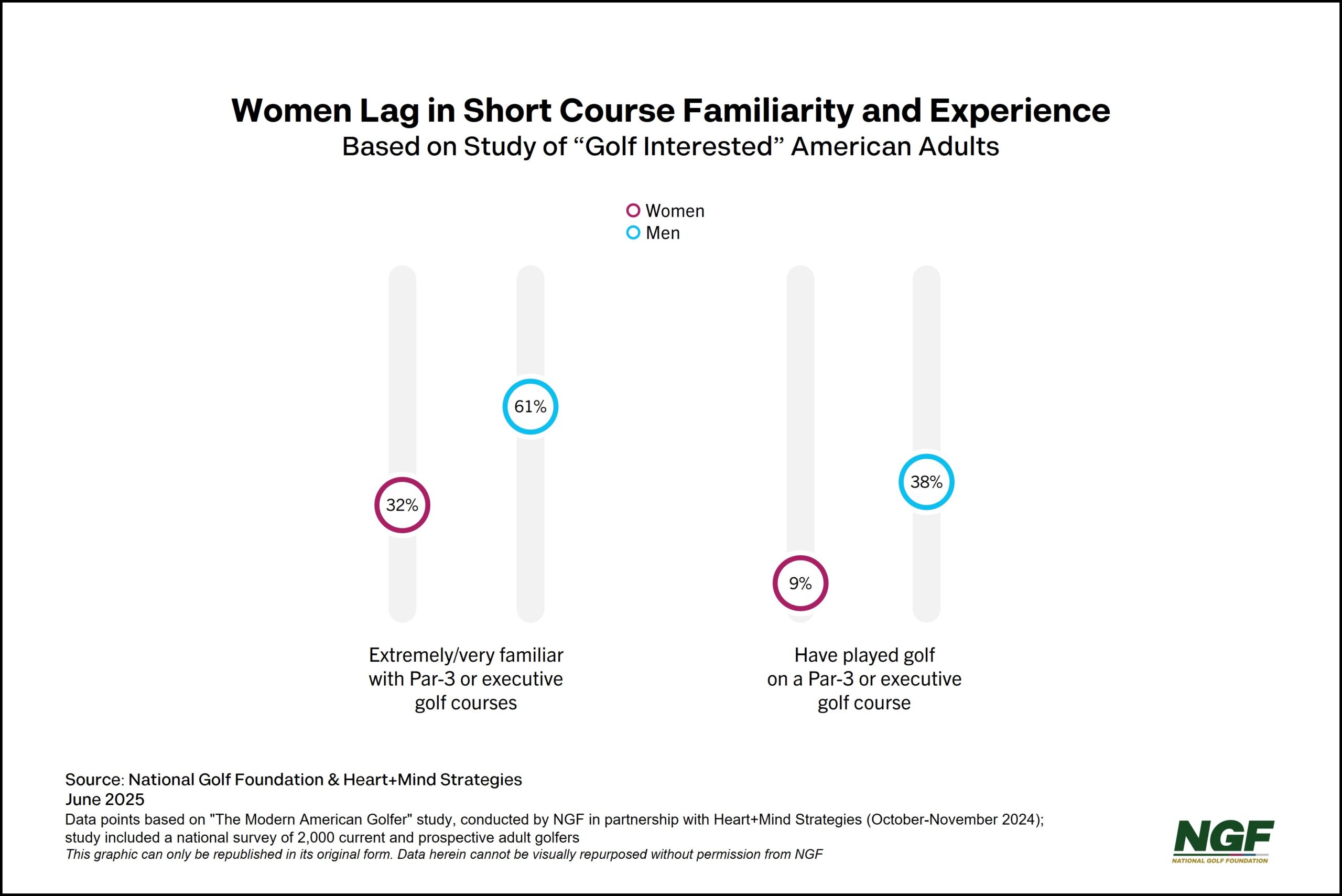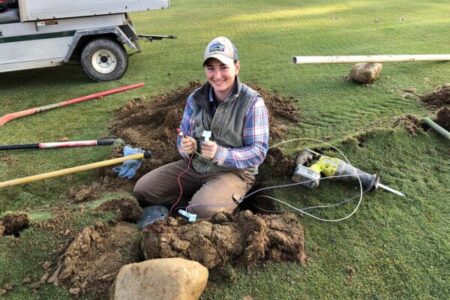As we’ve detailed recently, women’s remarkable surge in golf — accounting for almost half of the sport’s entire growth over the past decade and now representing one-third of all golf participants (including on- and off-course players) — comes with multiple challenges: getting more to make the jump to traditional golf and then keeping them coming back.
NGF estimates 7.9 million women played on-course golf in 2024, while another 8.2 million engaged exclusively away from the course. That means only 49% of female participants play traditional golf — a significant crossover gap compared to men, where 65% (20.2 million of 31.2 million) include “green grass” in their recreational portfolio. But making it to traditional golf is only half the battle. Women who play golf on natural turf continue to lapse at higher rates than men, with conversion rates from beginner to “committed” less than half that of their male counterparts.
NGF research presents revealing differences between women who convert versus those who step away from traditional golf, whether temporarily or permanently. Unsurprisingly, women who failed to convert were far more likely to rate their golf introduction as low-fun (55% vs 19% of those who stayed). Beyond the obvious importance of enjoyment, though, successfully-retained female golfers had more intensive early experiences — they were nearly twice as likely to play on an actual course 3+ times during their introduction (76% vs 42%) and significantly more likely to find consistent playing partners (60% vs 39%). These women found authentic golf experiences combined with social connections that developed lasting commitment to the sport.
But the female crossover deficit points to a potentially bigger issue that may be central to golf’s growth and sustainability challenges. We believe the industry has developmental pathway issues, with breakdowns in how players progress — or think they can progress — from the more abbreviated, digital and “golfertainment” experiences to the full-scale, analog offering. The answer, we think, may lie in what we’re calling (right now, at least) “transitional facilities” — shorter formats like par-3 and executive courses that are underutilized and underpromoted. While full-length courses have made strides with forward tees and beginner-friendly modifications, we wonder if the real opportunity lies in existing short courses recognizing their untapped potential to serve as developmental pathways for newcomers. It’s a hypothesis we’ve been exploring in greater depth since last year, and the data suggests we may be onto something significant.

Transitional facilities are perfectly positioned to foster the positive experiences female beginners – and all other beginners, for that matter – need. They don’t require the length or level of precision that can frustrate newcomers, they’re less time-intensive and often less expensive, and they’re typically walkable. Most importantly, they provide the authentic course experiences that research shows are crucial for retention, including experiencing “shot euphoria” and the magical moment of seeing and hearing the ball go in the hole.
Yet our research reveals striking short course awareness gaps and underutilization among women. Among today’s female participants and prospects — women who currently play on- or off-course or have shown interest in doing so — only a third are familiar with par-3 courses, compared to more than 60% of men. More telling, only 9% of golf-interested females have actually played on a par-3 course, compared to 38% of males. This represents a massive missed opportunity to deepen engagement for converting female newcomers.
The solution isn’t to completely reimagine how women are introduced to golf. Professional instruction and approachable onboarding are still impactful. But we believe there’s opportunity to better promote and utilize the transitional facilities that already exist while strategically developing more where there are gaps. Female golfers’ conversion challenge may have a clear answer — we just need to bridge the gap between where women start and where we hope they’ll go. Transitional facilities are that bridge, and the data shows we’re dramatically underutilizing this crucial resource for growing participation among females (and other audiences).
The NGF will be exploring this hypothesis in greater depth, examining how transitional facilities could reshape golf’s development pathway. Discussions with our Presidents Council — NGF’s strategic advisory circle and highest membership tier — inspired us to increase our focus on an area that has the potential to unlock the industry’s next wave of sustainable growth.



